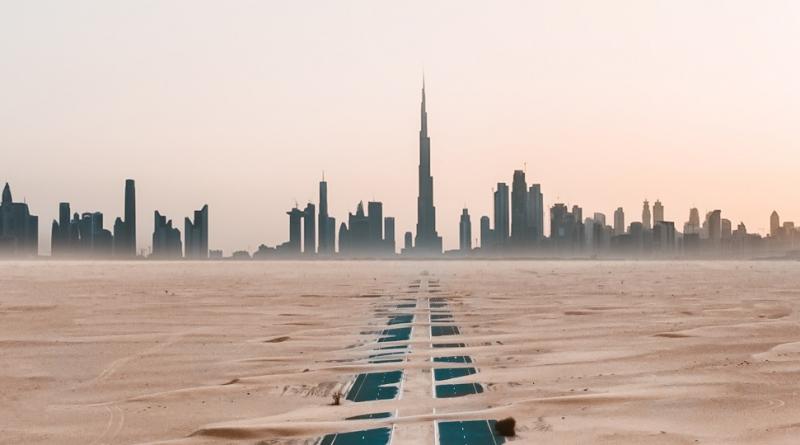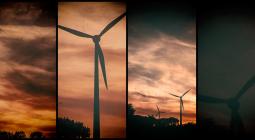From hydrocarbons to green hydrogen: Are the Gulf petrostates embarking on a new energy course?

On track? The United Arab Emirates have announced ambitious plans for cutting emissions and boosting renewable energy by 2050.
How are the Gulf states, long typecast as the world’s oil suppliers, adapting their energy systems to new technical, environmental, and economic realities? IRENA’s DG Francesco La Camera believes technology and shrewd policies can power a regional energy transition.
The Arabian Gulf is famous for its oil and year-round sunshine. Until recently, oil was used to power the regional economies, while sunshine drew sunbathing tourists. But that status quo is changing. Increasingly, the sun is not only fueling hospitality, but also powering sustainable economic development across the region. It’s no surprise that the Gulf Cooperation Council (GCC) countries have relied on hydrocarbons as their primary energy source, given that they hold 29 percent of global crude oil reserves and production is cheap.
But the confluence of an oil price collapse in 2014, a policy commitment to address climate change, steadily increasing domestic oil and natural gas consumption, and a huge decrease in renewable energy technology costs – particularly solar PV – has altered the calculus and prompted policy makers to value their perennial sunshine more highly. Over the past five decades, and accelerating over the past 15 years, countries in the region have developed and diversified their economies zealously. This, alongside high population growth and only recently reduced fuel and electricity subsidies, has resulted in a surge in domestic energy consumption. Total final energy consumption in the GCC has doubled since 2000 and almost quadrupled since 1990, according to the International Renewable Energy Agency (IRENA).
"Renewables and energy efficiency will be crucial for combating climatechange in the short term - with green H2 in longer-term role."
IRENA’s Director-General Francesco La Camera
A system reconfigured
Because this demand traditionally has been met through domestic oil and natural gas reserves, the hydrocarbons available for export are reduced, impacting oil revenue and advancing the steady depletion of finite reserves. Meanwhile, the global collapse of oil prices five years ago put a significant strain on national budgets. Although prices have recovered somewhat, they remain far below earlier levels. This has pushed governments to restructure their economies more boldly and lower subsidies.
At the same time, the impact of climate change on the region has become clear. Rising temperatures mean more demand for air conditioning and greater costs for all industries that must adapt to hotter, dustier, and more humid weather. Rising sea levels could affect the coastal capitals of several states. In Saudi Arabia, major cities and virtually the entire industrial base are near sea level.
Sustainability in focus
Clearly, change was necessary, helped along by dramatically falling renewable energy costs that saw solar PV prices drop by 73 percent during the eight years through 2017, according to IRENA. It’s now cheaper for GCC states to build renewable energy plants than conventional ones.
“The major driver of the energy transition is the dramatic decrease in the cost of renewables. In this part of the world, it is possible to produce energy at around US$0.02 per kilowatt,” says IRENA’s Director General Francesco La Camera.
Countries across the region have defined more ambitious sustainability goals. The UAE Energy Plan 2050 aims to cut CO2 emissions by 70 percent, increase clean energy use by 50 percent, and reduce energy consumption by 40 percent compared to the business-as-usual scenario by 2050. Saudi Arabia wants to derive 30 percent of its electricity from non-fossil fuel sources by 2030 while cutting electricity consumption by 8 percent by 2021. Kuwait, for example, wants to cut energy consumption by 30 percent by 2030. The UAE is targeting an energy mix with 44 percent of power coming from renewables, 38 percent from natural gas, 12 percent from coal, and 6 percent from nuclear energy. Today, in the UAE and across the region, oil and natural gas provide nearly all primary energy supply.
Innovation, policy, regulation
As of 2018, 2 percent of the UAE’s electricity generation was from renewables, according to IRENA, four times more than in the next-highest GCC countries. The UAE’s leading position points to the crucial interplay of technology, policy, and regulation in transitioning to a more sustainable energy system. The UAE has been addressing sustainability and renewable energy at all levels for more than a decade, resulting in increasingly aggressive policy targets, regulatory changes, and commitments of resources to local innovation.
This interplay is crucial, says La Camera. He notes that government policies and regulations are shaped by innovation and evolving realities on the ground. This is especially true in the Middle East, where the plummeting cost of renewables has dramatic effects on economic development. La Camera cautions, however, that each country and region is unique: “The mix will be different in different countries. We must not think that one energy mix will be valid for all countries.” Each will follow a different path, with different choices in energy technologies and fuel sources.
Clean hydrogen
Both regionally and globally, La Camera says, renewables and energy efficiency are the two most effective levers for combating climate change in the short term. In the longer term, other technologies could play a role, including clean hydrogen generated by electrolysis using renewable power. The Dubai Electricity and Water Authority (DEWA), along with Siemens and Expo 2020 Dubai, is building a pilot green hydrogen electrolysis plant at the Mohammed bin Rashid Al Maktoum Solar Park in the desert outside Dubai.
From 2020 on, the plant will produce hydrogen for transportation, re-electrification, and industrial processes. “We are very supportive of the efforts to produce clean hydrogen through electrolysis. Notably, with small changes, we could use existing oil and gas pipeline infrastructure in the future to distribute hydrogen,” La Camera adds. He expects this clean hydrogen to be particularly valuable for use in heavy industry and as a fuel for the shipping sector, which moves 90 percent of all goods globally.
Siemens and DEWA will jointly pursue innovation in green hydrogen technology and investigate further applications. From tanning tourists to producing hydrogen for ships and cars, the role of the sun in the eyes of Arabian Gulf countries continues to evolve, as governments pursue energy transitions for a more sustainable future.
Ward Pincus is a freelance business and technology journalist. He lives and works in Dubai, UAE.
Christopher Findlay is an independent journalist based in Zurich, Switzerland.
Combined picture and video credits: IRENA, Getty images
20 August 2019
SIEMENS




